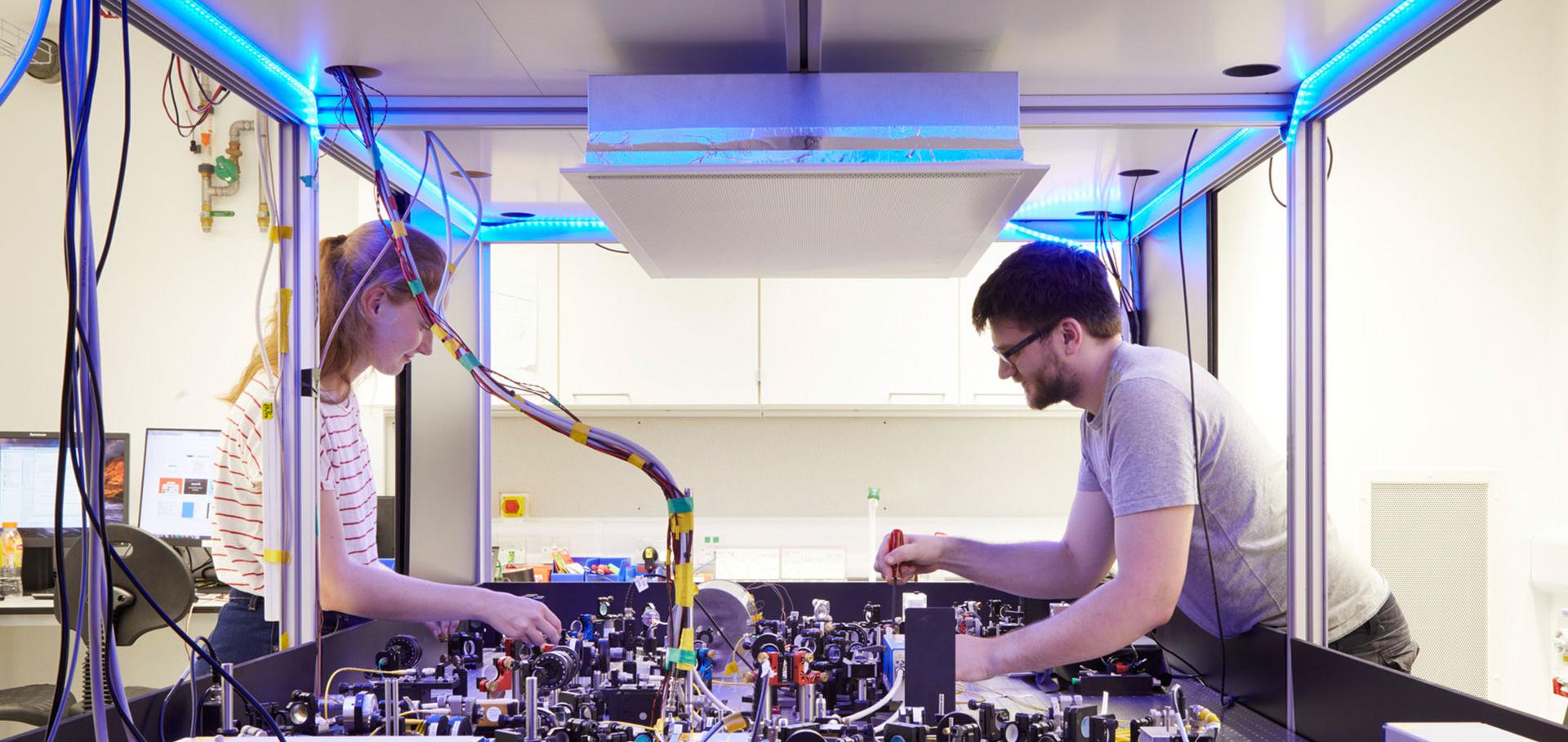Multi-parametric characterization of proton bunches above 50 MeV generated by helical coil targets
High Power Laser Science and Engineering Cambridge University Press (CUP) 12 (2024) e88
Abstract:
Dual stage approach to laser-driven helical coil proton acceleration
New Journal of Physics IOP Publishing 25:1 (2023)
Abstract:
Abstract Helical coil accelerators are a recent development in laser-driven ion production, acting on the intrinsically wide divergence and broadband energy spectrum of laser-accelerated protons to deliver ultra-low divergence and quasi-monoenergetic beams. The modularity of helical coil accelerators also provides the attractive prospective of multi-staging. Here we show, on a proof-of-principle basis, a two-stage configuration which allows optical tuning of the energy of the selected proton beamlet. Experimental data, corroborated by particle tracing simulations, highlights the importance of controlling precisely the beam injection. Efficient post-acceleration of the protons with an energy gain up to ∼16 MeV (∼8 MeV per stage, at an average rate of ∼1 GeV m−1) was achieved at an optimal time delay, which allows synchronisation of the selected protons with the accelerating longitudinal electric fields to be maintained through both stages.Multi-messenger dynamic imaging of laser-driven shocks in water using a plasma wakefield accelerator.
Nature communications (2025)
Abstract:
Understanding dense matter hydrodynamics is critical for predicting plasma behavior in environments relevant to laser-driven inertial confinement fusion. Traditional diagnostic sources face limitations in brightness, spatiotemporal resolution, and in their ability to detect relevant electromagnetic fields. In this work, we present a dual-probe, multi-messenger laser wakefield accelerator platform combining ultrafast X-rays and relativistic electron beams at 1 Hz, to interrogate a free-flowing water target in vacuum, heated by an intense 200 ps laser pulse. This scheme enables high-repetition-rate tracking the evolution of the interaction using both particle types. Betatron X-rays reveal a cylindrically symmetric shock compression morphology assisted by low-density vapor, resembling foam-layer-assisted fusion targets. The synchronized electron beam detects time-evolving electromagnetic fields, uncovering charge separation and ion species differentiation during plasma expansion - phenomena not captured by photons or hydrodynamic simulations. We show that combining both probes provides complementary insights spanning kinetic to hydrodynamic regimes, highlighting the need for hybrid physics models to accurately predict fusion-relevant plasma behavior.Multi-parametric characterization of proton bunches above 50 MeV generated by helical coil targets
High Power Laser Science and Engineering Cambridge University Press (CUP) 12 (2024) e88
Abstract:
Dual stage approach to laser-driven helical coil proton acceleration
New Journal of Physics IOP Publishing 25:1 (2023)


